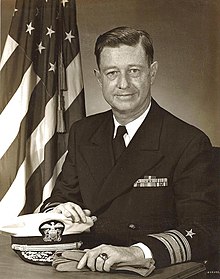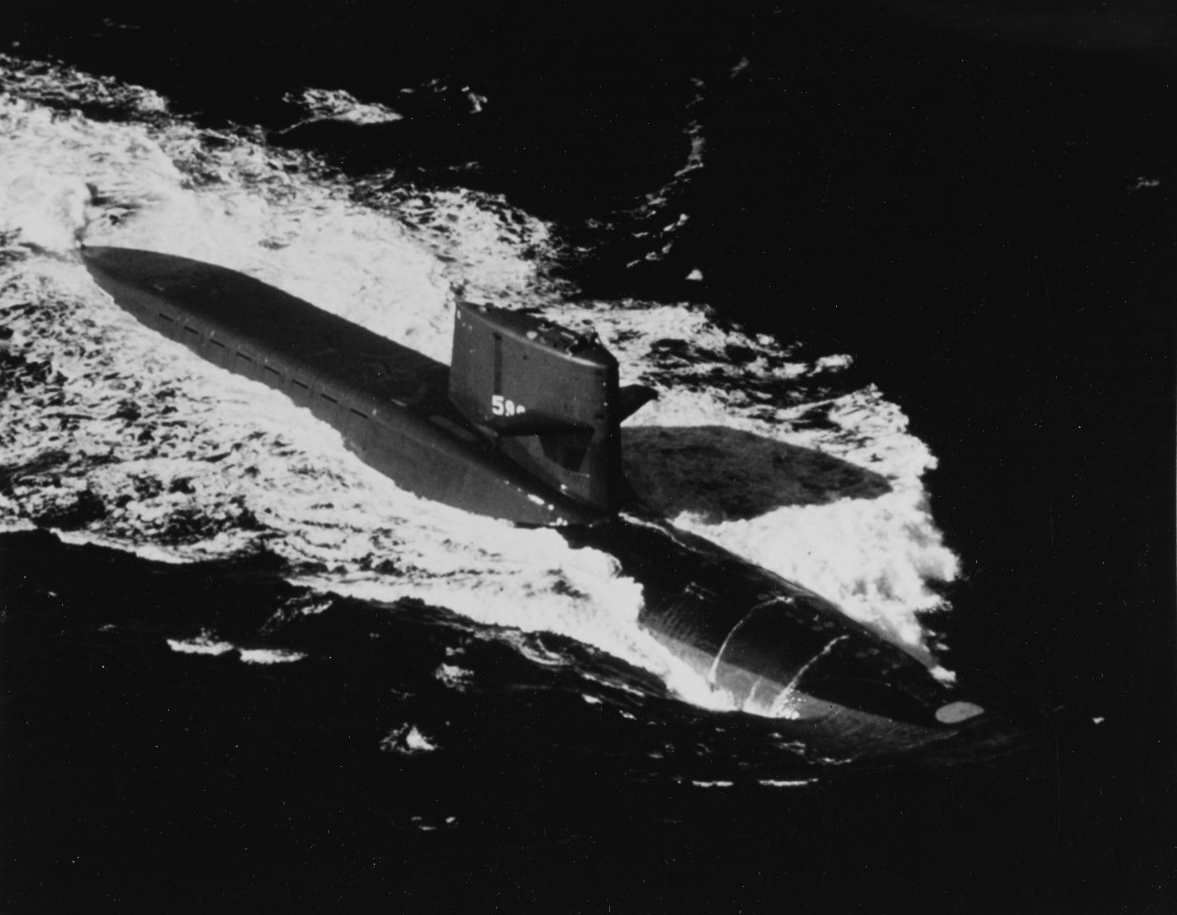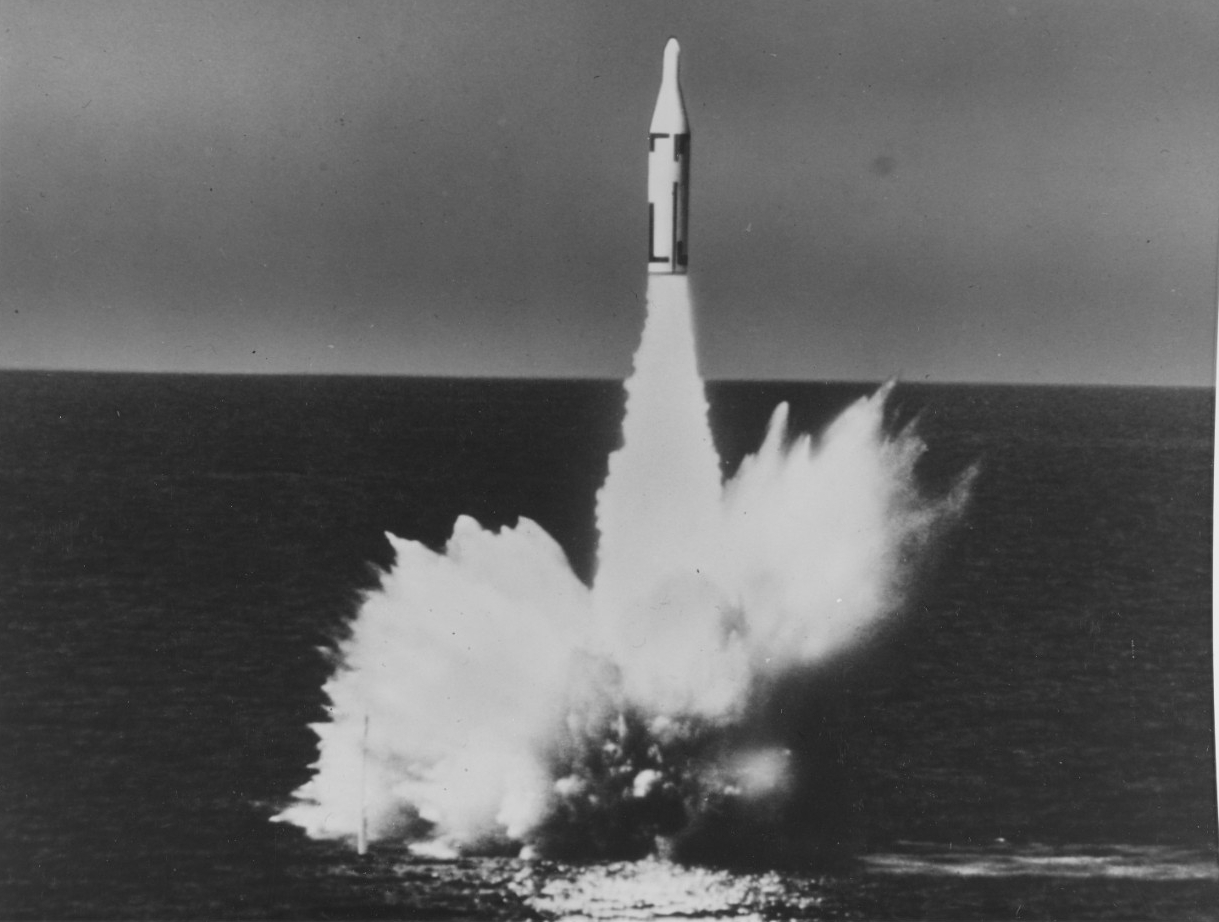 Vice Admiral Levering Smith (1910 – 1993) was a brilliant scientist and naval engineer who is often called the father of the U.S. Navy Polaris, Poseidon and Trident missile programs, pushing submarine technology to unprecedented heights during the 1950s, 60s and 70s.
Vice Admiral Levering Smith (1910 – 1993) was a brilliant scientist and naval engineer who is often called the father of the U.S. Navy Polaris, Poseidon and Trident missile programs, pushing submarine technology to unprecedented heights during the 1950s, 60s and 70s.
After graduation from the U.S. Naval Academy in 1932, Smith served aboard surface warships in a variety of general line officer assignments, and completed a postgraduate course of instruction in Ordnance Engineering in 1940. During World War II, he participated in 11 major campaigns in the Pacific Theater of Operations.
Smith’s more specialized technical contributions began with his assignment in 1944 to the Research and Development Division of the Bureau of Ordnance. This was followed by seven years at the Naval Ordnance Test Station in Inyokern, California, where he became head of the Explosives Department, followed by his appointment as Associate Technical Director – the only military officer to have been chosen for that position. After Inyokern, Smith was assigned as head of the Explosives Department at the Naval Ordnance Missile Test Facility in White Sands, New Mexico, where he also served as Navy Deputy to the Commanding General.
- Admiral Smith was born in 1910 in Joplin, Missouri.
- After graduating from the Naval Academy in June 1932, Smith was married to Beulah W. “Boots” Weymouth Lewis for over sixty years.
- During World War II, he survived the sinking of USS Hornet (CV 8) and USS Northampton (CA 26).
- Under the Director of the Navy’s Special Projects Office, VADM Smith directed development of U.S. ballistic missile submarine fleet from 1950-1977.
- He was present on the first and only ship to fire a nuclear missile from a ship to its target in practice.
- Admiral Smith was awarded the highest Navy award for noncombat service, the Distinguished Service Medal, three times.
- He was elected to the National Academy of Engineering in 1965.
- On January 7, 1972, he received a high Order of Chivalry from Queen Elizabeth II of England, which made him Honorary Knight Commander of the Most Excellent Order of the British Empire.
- He died April 5, 1993 in San Diego, California.
Following a 1955 National Security Council recommendation that part of the nation’s intermediate range ballistic missile force be sea based, the Navy joined with the Army in a program to deploy the liquid-fueled Jupiter missile on surface ships. Lockheed Corporation, having won an earlier competition by the U.S. Navy Bureau of Aeronautics for a submarine-launched ballistic test vehicle, was chosen as prime contractor to develop a solid-fuel version of the Jupiter missile.
Due to his reputation as the Navy’s preeminent expert on rockets and solid propellants, Smith was immediately drafted from White Sands by Rear Admiral William F. “Red” Raborn, USN, who had been named Director of the New Special Projects Officer undertaking the new trials. It was the beginning of an assignment that would ultimately produce the most effective of the nation’s strategic deterrent weapons systems.
Smith’s plan included an innovative and critically important approach to the definition of the requirements for a true deterrent weapon – it had to have enough range to reach important targets from areas of the ocean large enough to obscure potential launch points. The entire team, both oceanographers and strategists alike, worked in cooperation, forming a “board of directors” whose purposed was to ensure each team member recognized the critical issues and the importance of these goals.
This board of directors came to be known as “the steering task group”, with Smith as its architect. Included were the leaders of the participating universities, the Navy commands supporting the program, and executives of the prime contractors and subcontractors. In all, the task force spent three months defining the total program, including schedules, costs, performances goals, and the distribution of tasks among team members. Once the program was defined and understood, the steering task group met nearly every month to agree on changes, modify plans, and adjust resources accordingly. As a direct result, everyone was focused on the total outcome.
 Admiral Smith’s leadership was the antithesis of the dynamic, emotional leader about whom stories are told. He was a leader who respected the goals of his superiors, the authority and responsibilities he was given, and the capabilities and integrity of those working for him. Using the combined assets of universities, government labs and industry, Smith always insisted on what was vital, not necessarily what was appealing.
Admiral Smith’s leadership was the antithesis of the dynamic, emotional leader about whom stories are told. He was a leader who respected the goals of his superiors, the authority and responsibilities he was given, and the capabilities and integrity of those working for him. Using the combined assets of universities, government labs and industry, Smith always insisted on what was vital, not necessarily what was appealing.
Before the United States could deploy nuclear missiles to sea in cramped submarines, it had to find a propellant safer than the highly-flammable and toxic liquid fuels used in land missiles during the early days of the Cold War. Under Smith’s direction, the Special Projects working group developed a solid rocket fuel with the consistency of a rubber eraser, which proved to be more effective than liquid fuel in both range and accuracy. Unlike the Jupiter missiles, the new solid-fueled ballistic missiles were now able to be launched from a submerged submarine, thus significantly enhancing submarine operational survivability. This breakthrough in rocket fuel, combined with the downsizing of nuclear warheads and the development of naval nuclear propulsion, helped make ballistic missile submarines an operational reality.
The result was the solid-fuel-propelled Polaris missile, which started development in 1956 and was successfully launched from USS George Washington (SSBN 598) July 20, 1960. It was fitted on a total of 13 submarines and deployed in various versions until June 1974. The final version of the Polaris was the A-3, which consisted of a cluster of three warheads for larger yield and greater destructive power.
A development study for a longer range version of the Polaris missile started in 1963. The project was given the title Polaris B-3, but was eventually renamed Poseidon C-3 to emphasize the technical advances over its predecessor. The C-3 was the only version of the Poseidon missile ever produced. The first successful at-sea launch was from USS Observation Island (EAG 154) in 1969; the first test launch from a submarine took place onboard USS James Madison (SSBN 627) in 1970. Between 1970 and 1978, the Navy produced about 620 Poseidon class missiles. 
Intent on further increasing accuracy and submarine survivability, Smith worked towards development of the Trident missile. Trident I first launched in January 1977 at Cape Canaveral, and was operationally deployed in 1979. The first eight Ohio (SSBN 726)-class submarines were built with Trident I missiles. The second variant of the Trident is more sophisticated and can carry a heavier payload, and is accurate enough to be a first strike counterforce, or second strike weapon. Trident II missiles were first deployed in 1990, and under a life extension program, are still in use on submarines today.
Smith’s team advanced from Polaris to Poseidon to Trident submarine missiles very effectively – each time increasing the range and lethality of the missiles until they could span oceans. His legacy can be seen in the fact that Trident missiles are carried in fourteen active Ohio class submarines, and are intended to serve until 2040. Admiral Smith’s achievements thus form the backbone of the nation’s submarine-based nuclear deterrent.